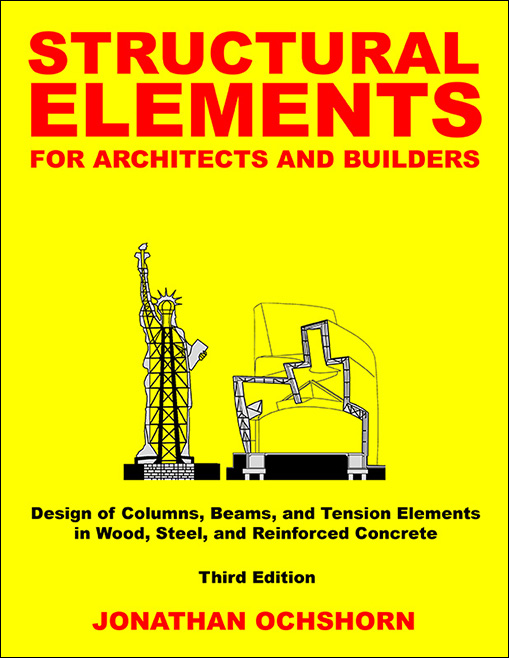
Jonathan Ochshorn
© 2009 Jonathan Ochshorn.
Directions: Enter values for loads and their positions along the beam, using any consistent units. To eliminate a load, set its magnitude to zero. Refer to the diagram for variable names. For example, use ft for distances; use either lb/ft and lb units, or kips/ft and kip units for loads; the reactions will be in either lb or kips, depending on your choice. Loads are assumed to act in a downward direction, with vertical reactions acting in an upward direction and horizontal reactions acting towards the arch. Upward-acting loads should be entered as negative numbers; a negative vertical reaction indicates that its direction is actually downward-acting rather than upward-acting; and negative horizontal reactions indicate that their direction is away from the arch.
Indicate free-body diagram [FBD] "cut" location (distance J; see Fig. 1 below). Shear, axial, and bending moment will be calculated for that point, with the FBD taken to the left of the cut. Internal shear forces whose vertical component acts downward on the right side of the FBD are shown as positive; those acting upward are shown as negative. Internal axial forces are shown as positive if pulling on the FBD (i.e., in tension); and as negative if pushing on the FBD (i.e., in compression). Internal moments acting in a counter-clockwise direction are positive; those acting clockwise are negative. In cases where the FBD is cut under a concentrated load, there will be two values each for shear and axial forces: the first value is taken just to the left of the load (so that the load is not considered to be acting on the FBD); while the second value includes the load. Moment values are not affected by the presence of a load at the FBD cut.
Press "update" button.
More detailed explanations and examples can be found in my text.

Disclaimer: This calculator is not intended to be used for the design of actual structures, but only for schematic (preliminary) understanding of structural design principles. For the design of an actual structure, a competent professional should be consulted.
First posted July 2, 2009 | Last updated July 2, 2009